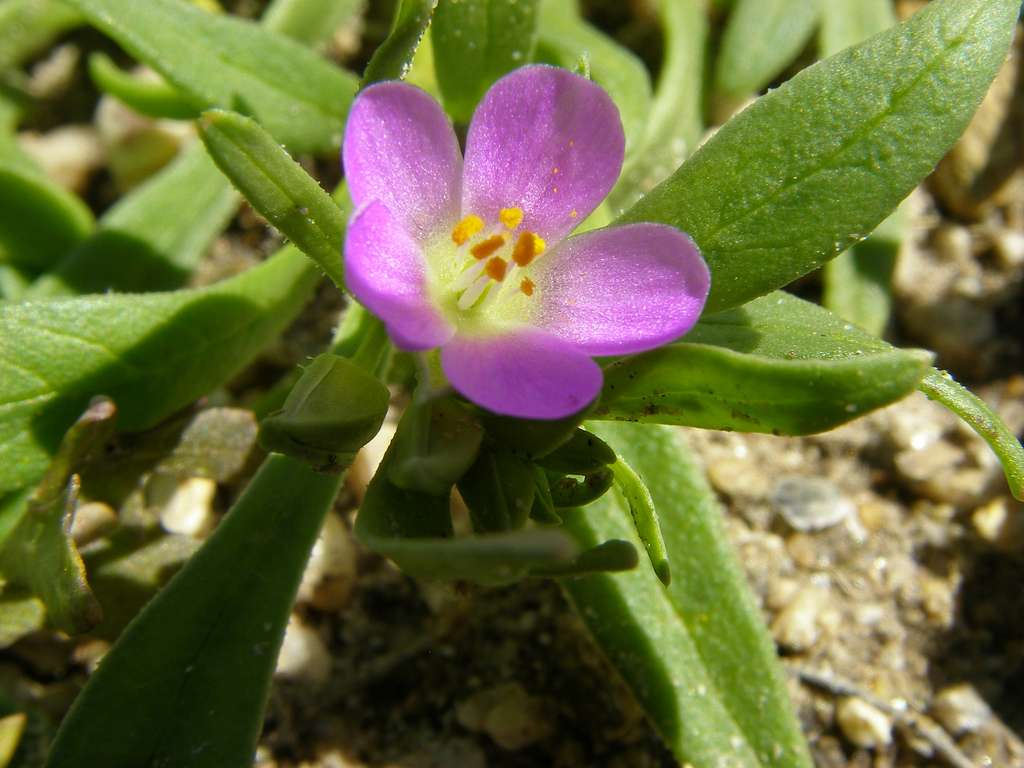- Home
- Search
- Images
- Datasets
- Sample Use
- How to Cite
- Additional Information
- About NEON
- NEON Data Portal
- ASU Biocollections
- About Symbiota
|
Family: Montiaceae |
Herbs, annual, not rhizomatous or stoloniferous. Stems prostrate to erect, branched; nodes glabrous. Leaves alternate, not articulate at base, somewhat to markedly clasping, attachment points linear; blade linear to oblanceolate, or ovate to spatulate, flattened, glabrous or with elongate unicellular hairs. Inflorescences racemose, somewhat to markedly secund (at least distally), elongate, bracteate; bracts leaflike. Flowers pedicellate; sepals persistent in fruit, imbricate, green, distinctly angled or keeled, ovate, herbaceous, glabrous or with elongate, unicellular hairs; petals usually 5, red; stamens 3-15, usually opposite petals, not adnate to petals; ovules 6-many; style present; stigmas 3. Capsules 3-valved, longitudinally dehiscent from apex, valves not deciduous, reflexed after dehiscence, margins markedly involute; endocarp and exocarp not separating. Seeds 10-20, black, ± ellipsoid, reticulate or tuberculate viewed at 30×, glabrous, estrophiolate. x = 12. PLANT: Annual herbs. STEMS: branched, several to many, prostrate to erect. LEAVES: alternate, linear to spatulate, entire, succulent. INFLORESCENCE: an elongated raceme; bracts leaf-like. FLOWERS: few to many, pedicellate; sepals 2, ovate; petals 5, red to purple, rarely white; stamens 3-15. CAPSULE with 3 valves. SEEDS ovate to elliptic, black, smooth to finely reticulate. NOTES: Ca. 14 spp. in the temperate w. Americas. (for J. L. Calandrini, 1703-1758, Swiss botanist). REFERENCES: Bair, Allison, Marissa Howe, Daniela Roth, Robin Taylor, Tina Ayers, and Robert W. Kiger. 2006. Vascular Plants of Arizona: Portulacaceae. CANOTIA 2(1): 1-22. |


